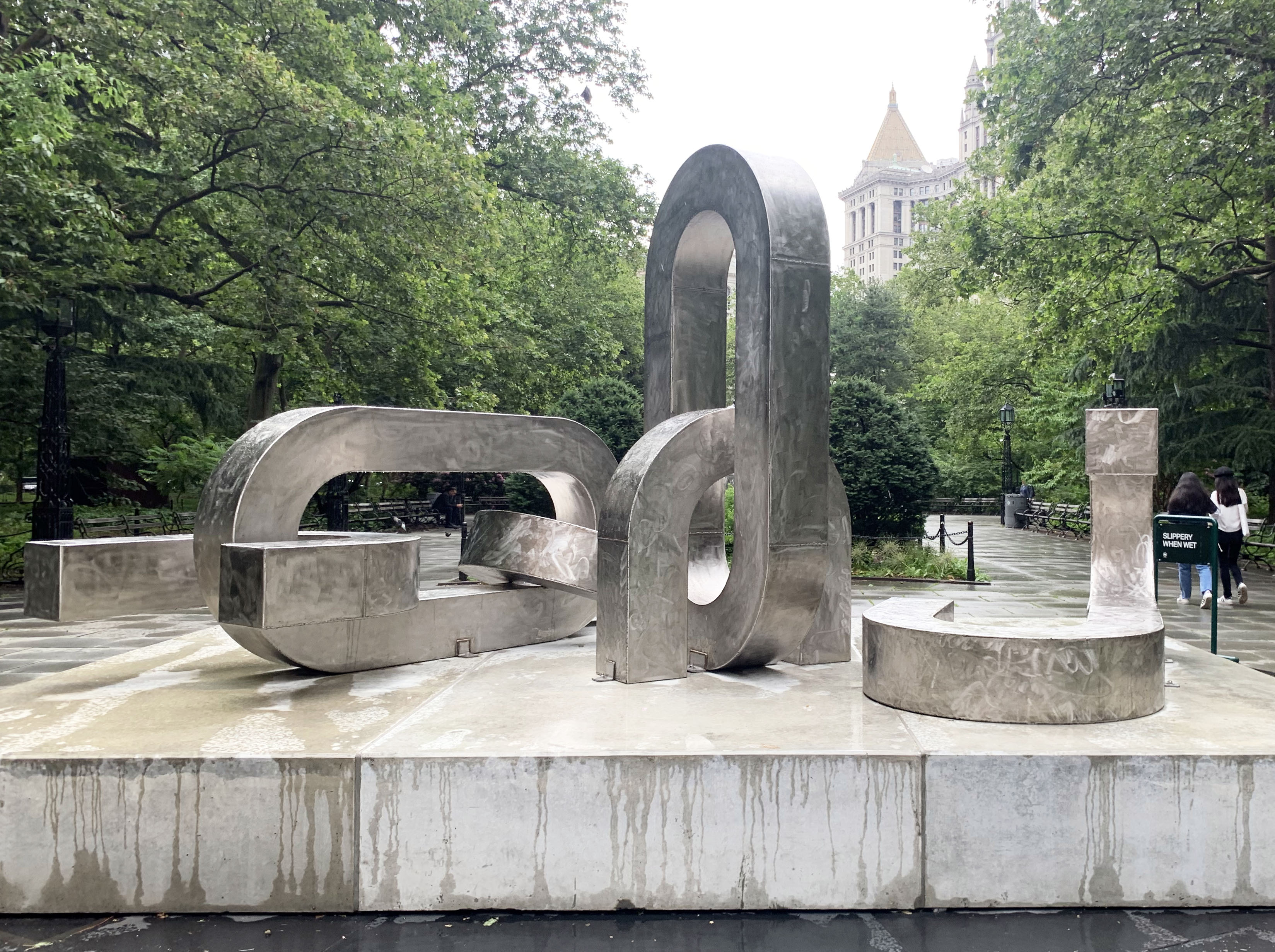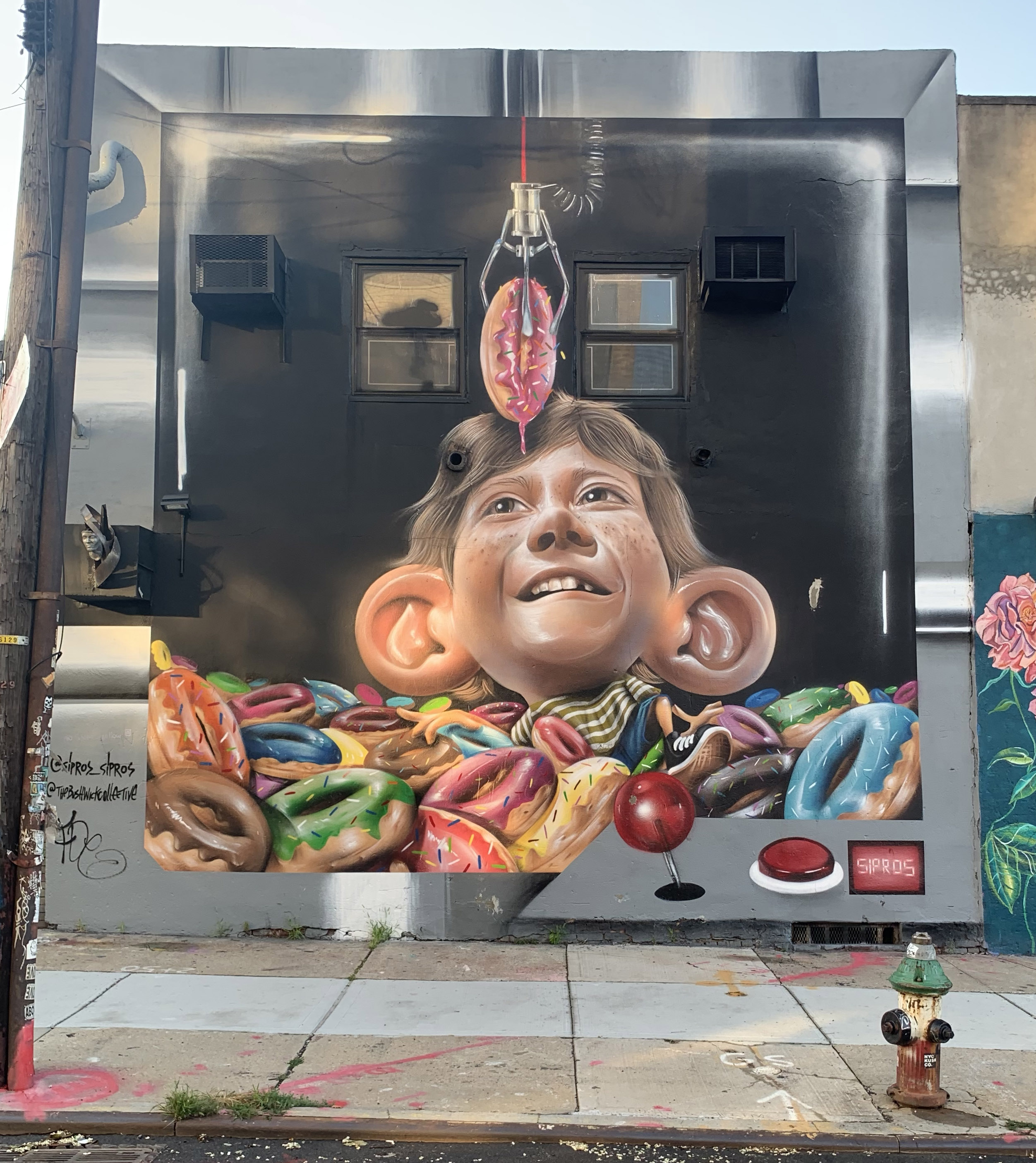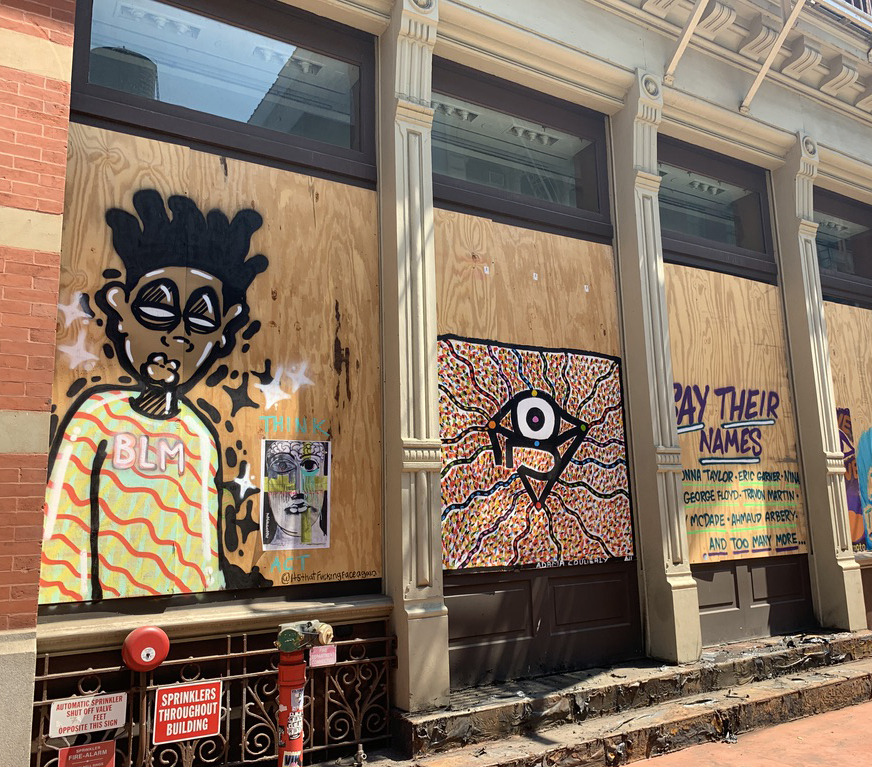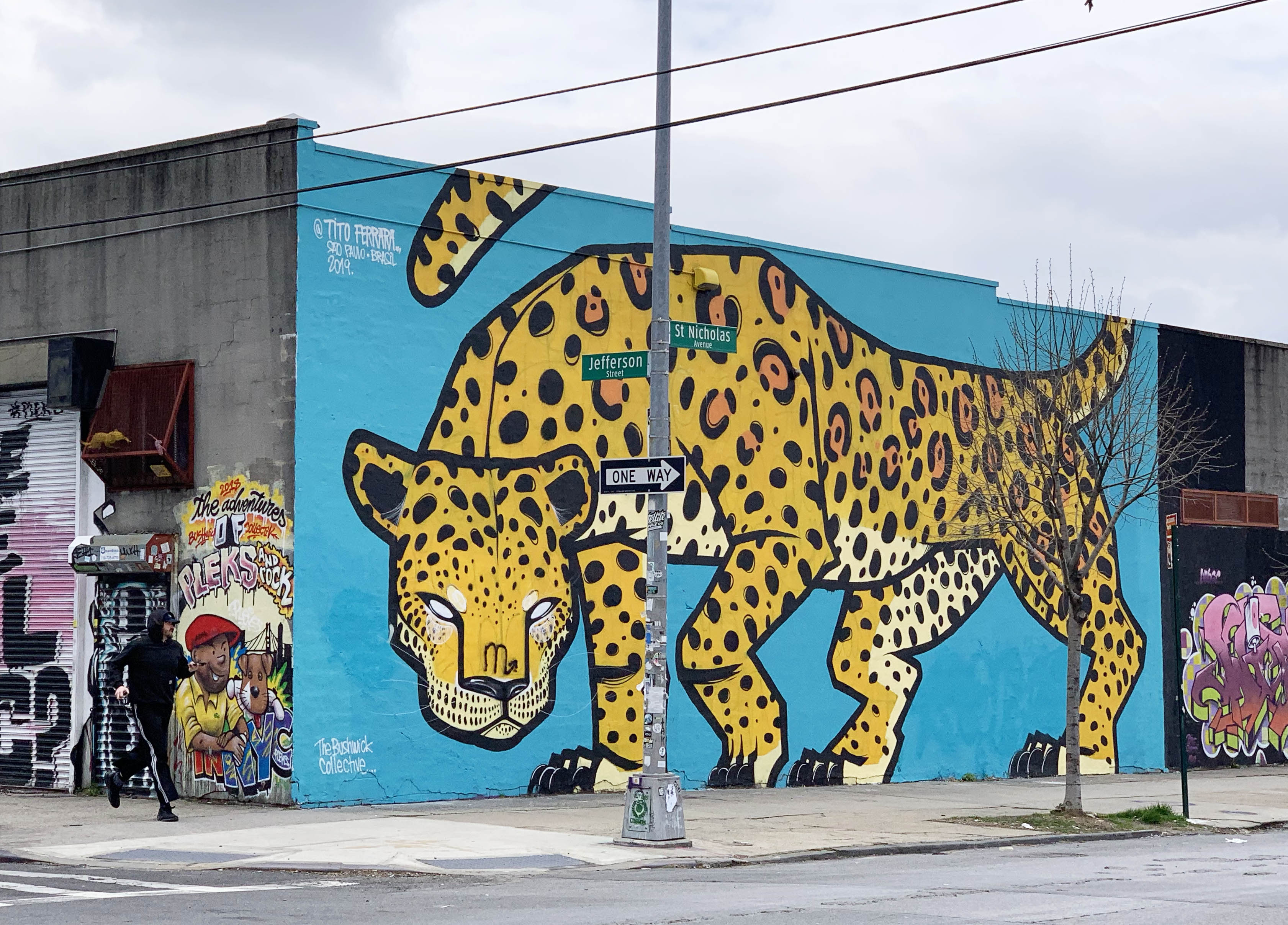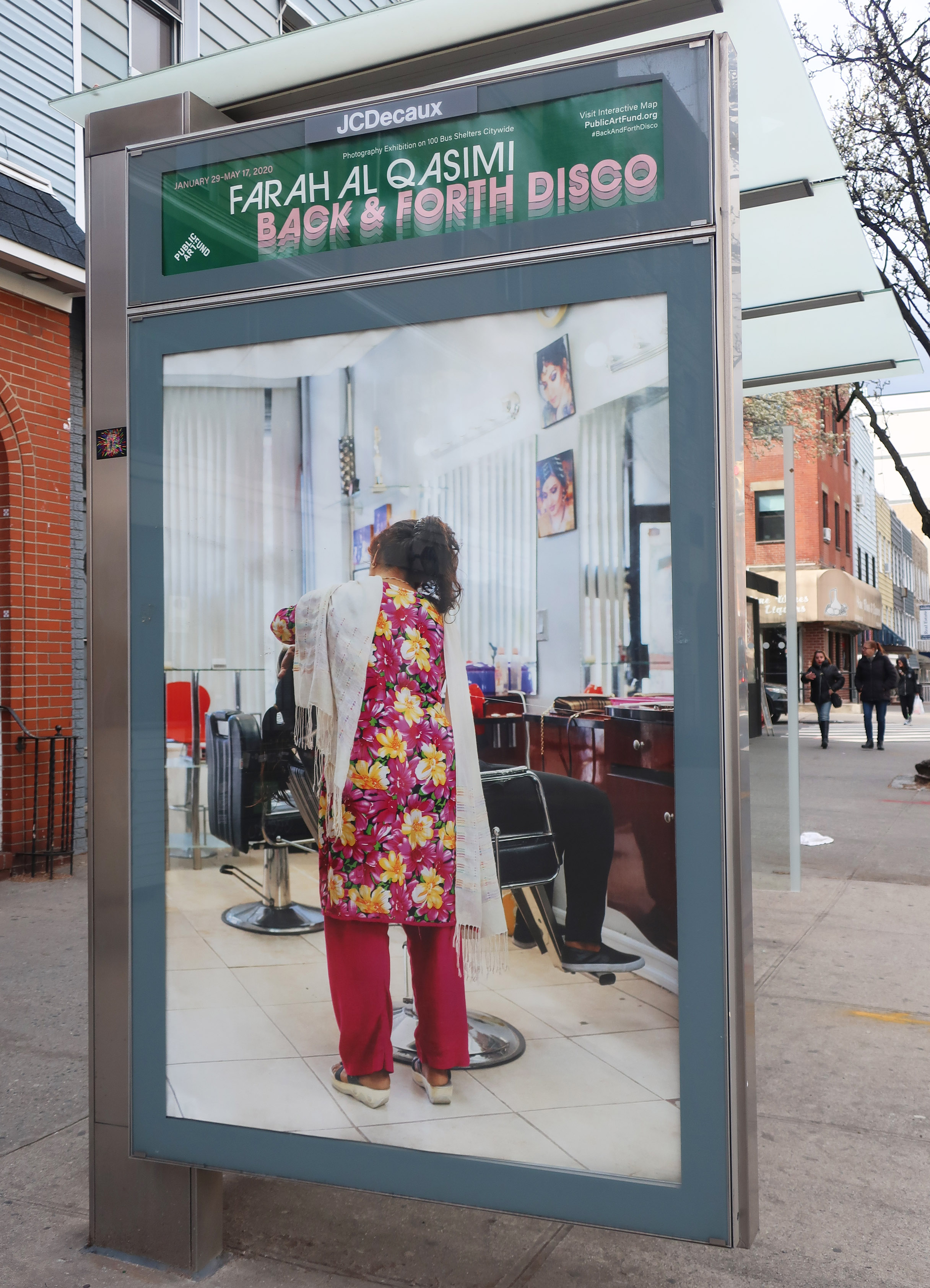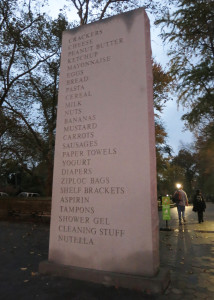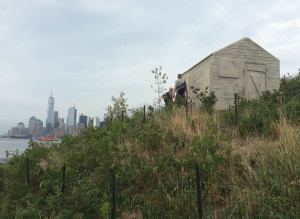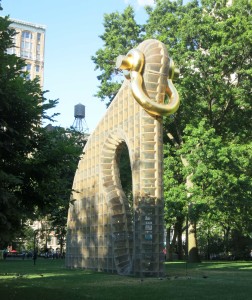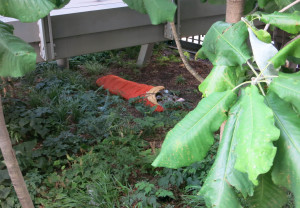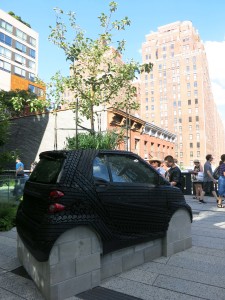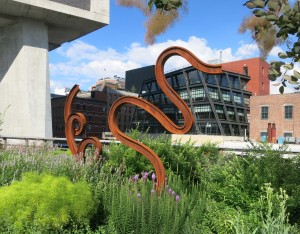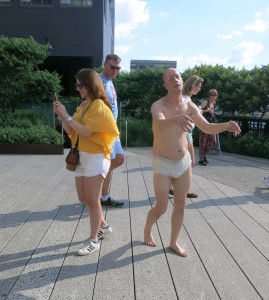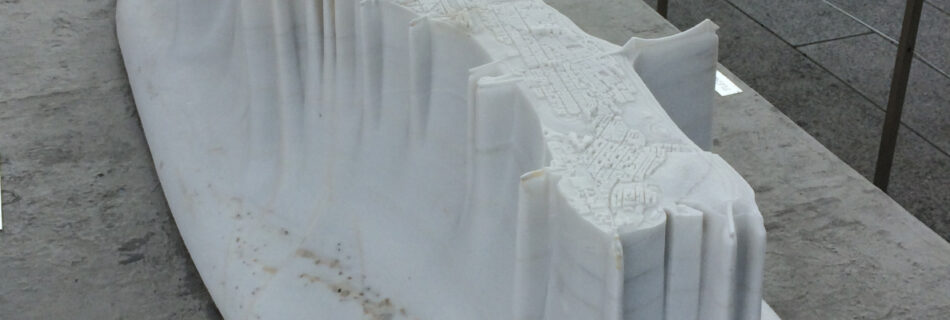Near a text describing City Hall Park as the ‘refuge of the people, the cradle of liberty,’ Native American artist Cannupa Hanska Luger’s steel sculpture of a bison skeleton recalls the deliberate mass slaughter of the animal from the mid-to-late 19th century. Part of the Public Art Fund’s annual art programming in the park, the solitary sculpture is smaller than past installations but meaningfully and impactfully placed at the park’s dramatic southern entrance. Titled ‘Attrition,’ the piece speaks to sustained attack on the lives and culture of Native American peoples by the near eradication of bison, yet the bison skeleton’s mechanical, plated design and obviously durable material conveys strength and resilience. (On view through Nov 17th.)



